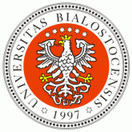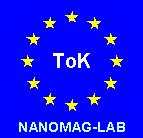Sponsors:





|
|
Organized by
the Institute of Experimental Physics, University of Bialystok
Maria Balanda
Institute of Nuclear Physics PAN
Kraków, Poland
Molecular magnets and nanomagnets
-
Molecular magnets represent a new class of magnetic materials based on molecular complexes and synthesized by means wet chemistry methods. Since about two decades a large number of metal-organic and purely organic magnetic compounds have been obtained with a large variety of structures, including chains, layered systems and three-dimensional networks. The critical temperatures for the organic are low but some of the metal-organic compounds show ordering at room temperature. Organic groups in the latter mediate the interactions between magnetic moments of the metal ions or can be an additional source of magnetic moments. Molecular magnetic materials show properties not met in inorganic magnets i.e. low density, transparency, biocompatibility, chirality, or change of a spin state when light, pressure or temperature change is applied. Some of the charge transfer salts are examples of conducting molecule-based magnets. The search for multifunctional materials which join magnetism with a second property is an important trend of the molecular magnetism.
A big success in the field of molecular magnetism was also a discovery of unusual magnetic relaxation properties for isolated organo-metallic clusters with a high-spin ground state, the so called Single Molecule Magnets (SMM). A strong uniaxial anisotropy combined with the high spin gives rise to a large potential barrier between the up- and down-spin states and very slow relaxation of magnetic moments. At low temperatures these nano-sized objects become magnetically bistable and show quantum behaviour. Quite recently the similar properties were found in one-dimensional systems, the so called Single Chain Magnets (SCM).The design, characteristics and understanding of properties of the molecular nanomagnets are in the focus of the interdisciplinary research due to the novel phenomena observed and also due to the trend aimed in the miniaturisation of memory elements and in quantum computing.
|
|
|